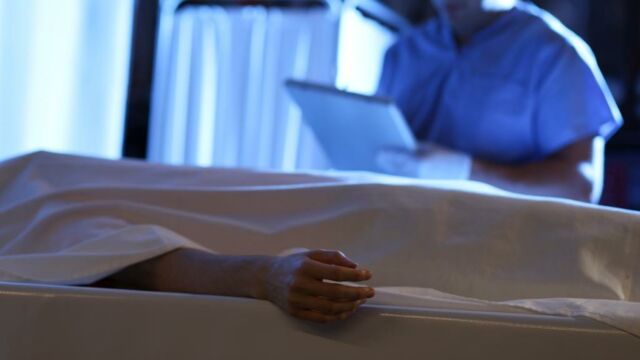Livor mortis: Hospice nurse reveals blood accumulates in certain parts of your body after death

A hospice nurse explains several strange phenomenons that happen after death on her YouTube channel. She has now focused on livor mortis.
Most of us are quite anxious to known what happens to our soul after death, and whether there is actually another life after our earthly one. However, it is also interesting to find out what happens to the human body after we pass away. A hospice nurse named Julie has become a viral sensation after taking upon herself to educate families on little-known deathbed phenomenons, as well as what happens to our body after death. Today, we are focusing on livor mortis.
Discover our latest podcast
What is livor mortis?
Livor mortis, also known as postmortem lividity, is a process during which blood pools down in certain areas of the human body. It is caused by gravity, and causes a discolouration of the skin, turning it a purplish colour. According to the National Library of Medicine, it happens quickly after death, and remains.
More under this adMore under this adIt begins to be apparent about an hour after death, is well-formed in about 3 to 4 hours after death, and gets fixed in about 6 to 8 hours after death. However, it is worth noting that the timing of livor mortis is highly variable.
According to nurse Julie, bloods accumulates in the area of the body that is closest to the ground. This means that if someone dies while lying down, their entire back side can turn purple because of the accumulation of blood in that area. She explains:
More under this adMore under this adYou will notice usually the back of their legs, the whole back side of them, will look purple or darker. That is because all their blood is pooling down, gravity is pulling it down.
Nurse Julie educates families on the process of dying
After working as an ICU nurse for several years, nurse Julie McFadden turned to hospice care. While her medical training focused on getting patients back to health, she learned a lot by caring for dying patients. Most of the deathbed phenomenons she describes in her videos are not well-known, which is why she has chosen to educate families so they are not stressed out when their loved-ones go through the dying process.
More under this adMore under this adIf you are caring for a loved-one, do not hesitate to reach out to Carers UK at 0808 808 7777 for information and support.
Read more:
Hospice nurse shares chilling story about woman who may have 'chosen' moment of death
Hospice nurse reveals ALS is the worst disease to die from: 'I just wouldn't do it'
Sources used:
YouTube: The ACTUAL process AFTER the body is no longer alive
National Library of Medicine: Evaluation of Postmortem Changes